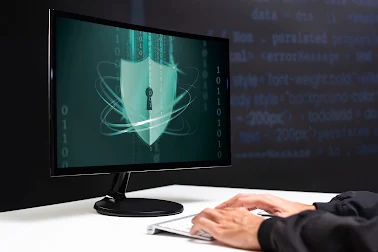In the rapidly evolving landscape of cybersecurity, traditional methods of managing security operations are increasingly being outpaced by the sophistication and frequency of cyber threats. To keep up, businesses are turning to innovative solutions like Security Operations Center as a Service (SOCaaS). This paradigm shift offers a proactive, scalable approach to cybersecurity, providing organizations with advanced monitoring, detection, and response capabilities without the need for extensive in-house resources. This article explores how SOCaaS is shaping the future of security operations and the key benefits it brings to businesses.
Understanding SOC as a Service
SOC as a Service is a managed security service that provides a comprehensive suite of cybersecurity operations, including continuous monitoring, threat detection, incident response, and compliance management. Delivered by a third-party provider, SOCaaS leverages advanced technologies and expert personnel to offer round-the-clock protection against cyber threats. This model allows organizations to access high-level security services without the need to build and maintain their own security operations center, which can be cost-prohibitive and resource-intensive.
The Need for SOCaaS in Modern Cybersecurity
The modern threat landscape is characterized by increasingly sophisticated cyber attacks that can devastate businesses. Traditional security measures often fall short in providing the necessary protection against these threats. SOCaaS addresses this gap by offering:
- 24/7 Monitoring: Continuous surveillance of networks and systems ensures that threats are detected and mitigated in real-time, minimizing potential damage.
- Advanced Threat Detection: Utilizing cutting-edge technologies like machine learning and artificial intelligence, SOCaaS can identify and respond to threats that traditional methods might miss.
- Expertise and Resources: Access to a team of cybersecurity experts with specialized skills and experience enhances the effectiveness of security operations.
Key Benefits of SOCaaS
Enhanced Threat Detection and Response
SOCaaS providers use sophisticated tools and technologies to monitor and analyze security events across an organization’s IT environment. By correlating data from various sources, they can identify potential threats and respond quickly to mitigate risks. This proactive approach significantly reduces the likelihood of a successful cyber attack and limits the impact of any incidents that do occur.
Cost Efficiency
Building and maintaining an in-house SOC can be prohibitively expensive, particularly for small and medium-sized businesses. SOCaaS offers a cost-effective alternative, providing access to top-tier security services without the need for significant capital investment. By outsourcing security operations, organizations can allocate their resources more efficiently and focus on their core business functions.
Scalability and Flexibility
As businesses grow and evolve, their security needs change. SOCaaS offers the scalability to adjust security operations in line with an organization’s growth and changing threat landscape. This flexibility ensures that businesses remain protected as they expand, without the need for continual investment in new security infrastructure and personnel.
Compliance and Reporting
Meeting regulatory requirements and maintaining compliance can be a complex and time-consuming process. SOCaaS providers assist with compliance by ensuring that security measures align with industry standards and regulations. They also offer detailed reporting and documentation, simplifying the audit process and providing valuable insights into an organization’s security posture.
Access to Latest Technologies
SOCaaS providers continuously update their tools and technologies to stay ahead of emerging threats. This ensures that businesses benefit from the latest advancements in cybersecurity without the need to invest in and manage new technologies themselves. By leveraging the expertise and resources of a SOCaaS provider, organizations can maintain a robust security posture in the face of evolving threats.
Implementing SOCaaS: Considerations and Best Practices
Choosing the Right Provider
Selecting a SOCaaS provider is a critical decision that can significantly impact an organization’s security operations. It’s important to choose a provider with a proven track record, comprehensive service offerings, and the ability to tailor solutions to meet specific business needs. Evaluating the provider’s technology stack, expertise, and customer support capabilities is essential to ensure a successful partnership.
Integration with Existing Systems
For SOCaaS to be effective, it must integrate seamlessly with an organization’s existing IT infrastructure. This includes compatibility with current security tools, processes, and workflows. Ensuring that the provider can integrate their services with your systems without causing disruptions is crucial for maintaining operational continuity.
Continuous Improvement
The cyber threat landscape is constantly changing, and security operations must evolve to keep pace. Regularly reviewing and updating SOCaaS strategies and practices is essential to address new threats and vulnerabilities. This involves ongoing collaboration with the SOCaaS provider to refine detection and response capabilities and ensure that security measures remain effective.
Conclusion
As cyber threats become more sophisticated and pervasive, traditional security measures are no longer sufficient to protect organizations. SOC as a Service offers a proactive, scalable solution that enhances threat detection, improves response times, and provides access to the latest cybersecurity technologies. By leveraging SOCaaS, businesses can navigate the future of security operations with confidence, ensuring robust protection against cyber threats and compliance with regulatory requirements. Embracing SOCaaS is not just a strategic move but a necessity in today’s complex cybersecurity landscape.









